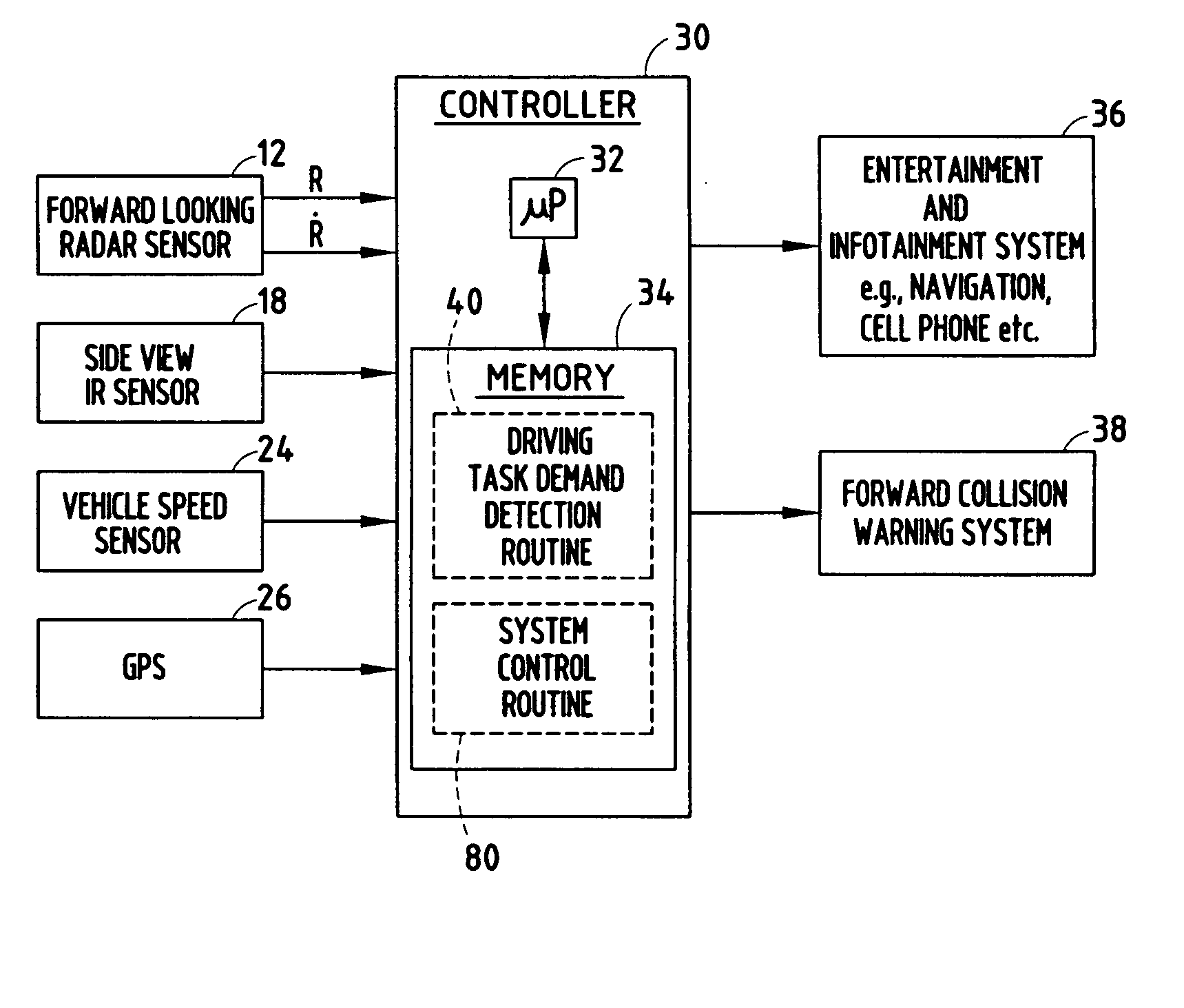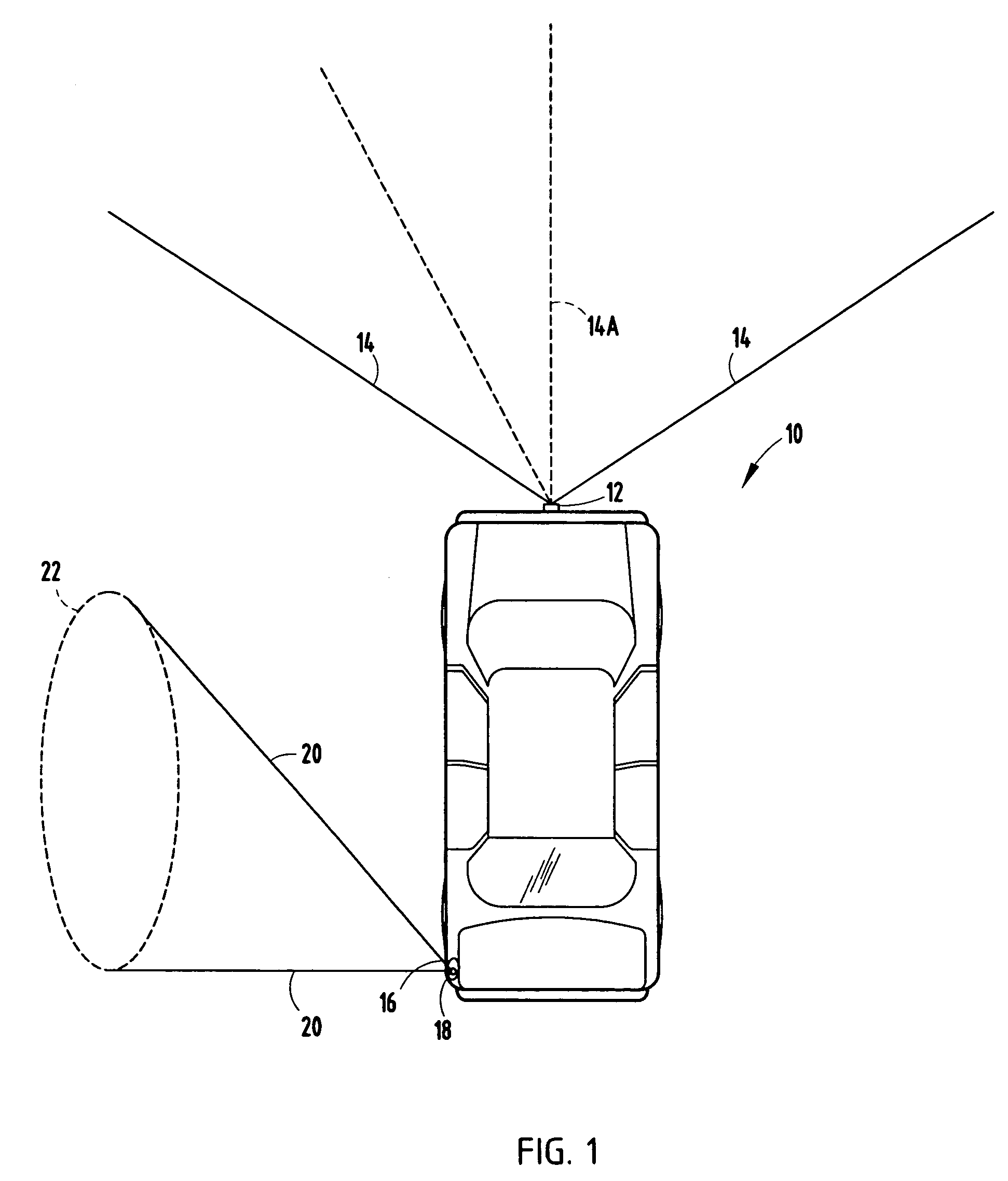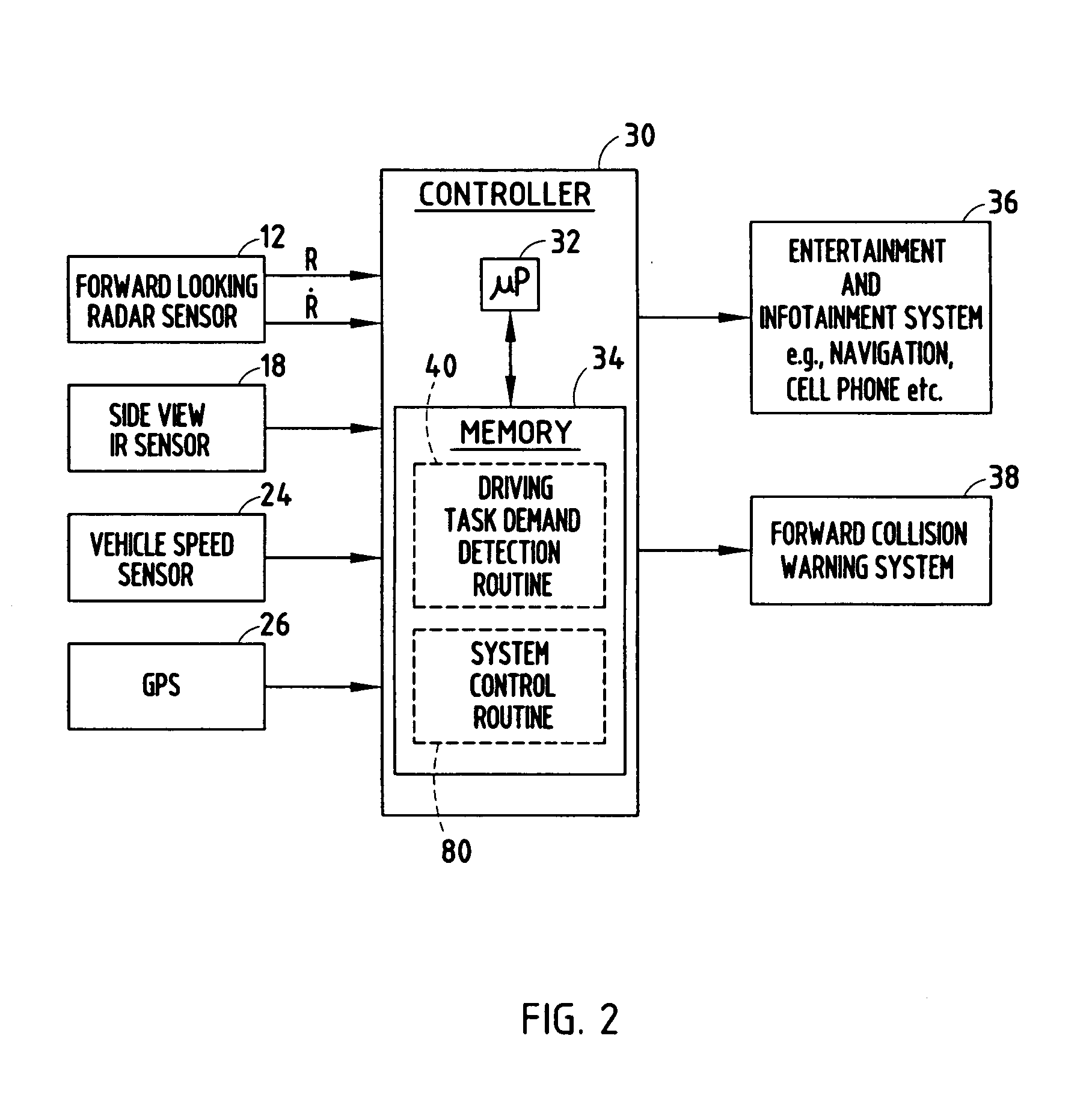Method for determining driving task demand based on speed variability
a technology of speed variability and task demand, applied in the direction of reradiation, pedestrian/occupant safety arrangement, instruments, etc., can solve the problems of increasing the driving task demand of the driver, requiring more attention, and conventional infotainment control systems and collision warning systems generally do not provide dynamic control of various features
- Summary
- Abstract
- Description
- Claims
- Application Information
AI Technical Summary
Benefits of technology
Problems solved by technology
Method used
Image
Examples
first embodiment
[0027] Referring to FIG. 3, the driving task demand detection routine 40 is illustrated which employs the forward looking radar sensing system and the side view IR sensing system. Routine 40 begins at step 42 and performs an initialization in step 44. The initialization may include setting the total number of forward targets N equal to zero, setting the number of frames per target ni equal to zero, setting the number of frames within a time window T, and may include other initial settings.
[0028] Following the initialization step 44, routine 40 proceeds to step 46 to obtain and store ranger Ri, range rate {dot over (R)}i for each of the detected forward target objects i, the side vehicle information (30), and the host vehicle information Vh for frame j. Frame j includes the sensed data at a particular time captured in frame j. Next, routine 40 calculates the total number of detected forward targets N, the number of frames per target ni, and the speed for each detected forward target...
second embodiment
[0038] Referring to FIG. 5, a driving task demand detection routine 140 is illustrated absent the use of the forward looking radar system and the side view object detection system. Instead of sensing objects forward or to the side of the host vehicle, routine 140 determines the driving task demand signal Demandj based on speed of the host vehicle 10.
[0039] Routine 140 begins at step 142 and performs an initialization in step 144. The initialization includes setting the number of frames for the host vehicle nh equal to zero and setting the number of frames within a time window T. Next, in step 146, routine 140 obtains and stores the host vehicle speed Vh for frame j in step 146. In step 148, routine 140 calculates the number of frames for the host vehicle nh.
[0040] Proceeding to decision step 150, routine 140 determines if the number of frames for the host vehicle nh is greater than one and, if not, sets a speed variance Sh2 equal to zero in step 152. Routine 140 then computes the ...
PUM
 Login to View More
Login to View More Abstract
Description
Claims
Application Information
 Login to View More
Login to View More - R&D
- Intellectual Property
- Life Sciences
- Materials
- Tech Scout
- Unparalleled Data Quality
- Higher Quality Content
- 60% Fewer Hallucinations
Browse by: Latest US Patents, China's latest patents, Technical Efficacy Thesaurus, Application Domain, Technology Topic, Popular Technical Reports.
© 2025 PatSnap. All rights reserved.Legal|Privacy policy|Modern Slavery Act Transparency Statement|Sitemap|About US| Contact US: help@patsnap.com



